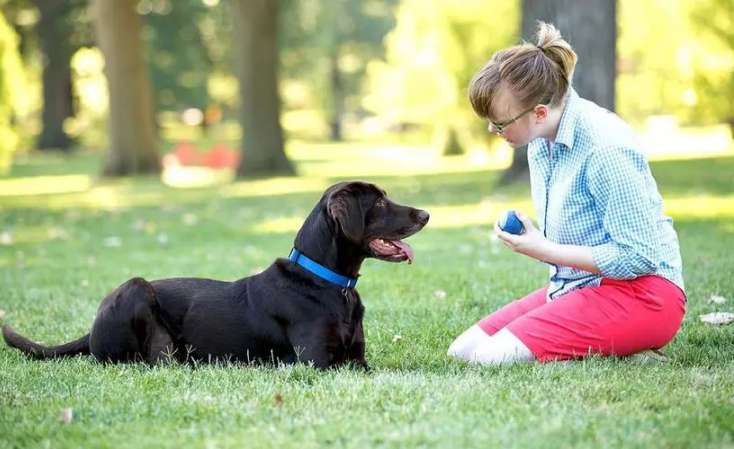
Training your dog to obey commands is not just about teaching them tricks; it’s about fostering a strong bond, ensuring their safety, and enhancing their overall behavior. Whether you’re a first-time dog owner or looking to refine your training techniques, this comprehensive guide will provide you with the necessary tools to successfully train your dog. With patience and consistency, you’ll soon have a well-mannered companion that listens to your commands.
Keywords:
- how to train your dog to obey commands
- positive reinforcement dog training
- best training techniques for dogs
- essential dog commands to teach
- troubleshooting common training issues
- consistency in dog training
- training sessions duration for dogs
- best dog training tools
1. Understanding Positive Reinforcement Dog Training
One of the most effective methods for teaching your dog commands is through positive reinforcement dog training. This technique rewards your dog for good behavior, making them more likely to repeat it in the future.
How to implement positive reinforcement:
- Use treats, praise, or toys as rewards when your dog successfully follows a command.
- Start with simple commands like “sit” or “down,” and reward them immediately after they comply.
- Gradually increase the difficulty of commands as your dog becomes more proficient.
By reinforcing good behavior, you create a positive learning environment that encourages your dog to listen to your commands.
2. Essential Dog Commands to Teach
When training your dog, it’s essential to focus on commands that will help you communicate effectively and maintain control in various situations. Here are some essential dog commands to teach:
- Sit: A fundamental command that helps your dog learn self-control.
- Stay: Teaches your dog to remain in a specific position until released.
- Come: Crucial for safety, this command allows you to call your dog back to you.
- Leave it: Helps prevent your dog from picking up or eating something harmful.
- Heel: Guides your dog to walk beside you on a leash, promoting good leash manners.
By teaching these commands, you’ll not only improve your dog’s behavior but also enhance their safety in different environments.
3. Best Training Techniques for Dogs
Different techniques work for different dogs, so it’s important to find what suits your pet best. Here are some best training techniques for dogs:
- Clicker Training: This method uses a clicker to mark the exact moment your dog performs the desired behavior. Follow the click with a reward to reinforce the behavior.
- Lure and Reward: Use a treat to lure your dog into the desired position (e.g., using a treat to guide them into a “sit”) and reward them once they comply.
- Shape Behavior: Break down complex commands into smaller steps and reward your dog for achieving each step.
Experiment with these techniques to see which resonates best with your dog.
4. Setting Up Training Sessions Duration for Dogs
Training sessions should be short and engaging to keep your dog interested. Training sessions duration for dogs can vary based on their age and attention span:
- Puppies: 5-10 minutes per session, 2-3 times a day.
- Adult dogs: 10-15 minutes per session, 1-2 times a day.
- Older dogs: 5-10 minutes per session, as they may tire more quickly.
Keeping sessions brief and fun will help your dog stay focused and eager to learn.
5. Consistency in Dog Training
Consistency is vital in dog training. It helps your dog understand what is expected of them and reinforces learning. Here are some tips for maintaining consistency in dog training:
- Use the same verbal commands and hand signals for each behavior.
- Ensure that all family members are on the same page regarding training techniques and commands.
- Practice commands in various environments to reinforce learning in different situations.
By being consistent, you’ll help your dog grasp commands more effectively and reduce confusion.
6. Troubleshooting Common Training Issues
Even the most dedicated trainers encounter challenges. Here are some tips for troubleshooting common training issues:
- Not responding to commands: Check if your dog understands the command. If not, revert to basic training and build up from there.
- Distractions: Start training in a quiet environment and gradually introduce distractions as your dog becomes more proficient.
- Lack of interest: Ensure you’re using high-value treats or toys as rewards. If your dog isn’t motivated, they may not be inclined to obey commands.
Addressing these issues early on can help you maintain a positive training experience.
7. Best Dog Training Tools
Having the right tools can make training more effective and enjoyable for both you and your dog. Here are some best dog training tools to consider:
- Clicker: A clicker helps with precise timing when marking desired behaviors.
- Training Treats: Choose small, tasty treats that your dog loves to keep them motivated.
- Leash and Collar: A sturdy leash and comfortable collar are essential for teaching commands like “heel.”
- Training Mat: A designated area for training can help your dog associate that space with learning.
Using these tools will enhance your training sessions and help your dog succeed.
Conclusion
Training your dog to obey commands is a rewarding process that strengthens your bond and enhances your pet’s behavior. By employing positive reinforcement, teaching essential commands, and maintaining consistency, you’ll set your dog up for success. Remember to keep training sessions engaging and use the best tools available. With dedication and patience, you’ll enjoy a well-behaved companion who listens to your commands, making every outing a joy. Embrace the journey of training and watch as your dog flourishes!

Comments (0)